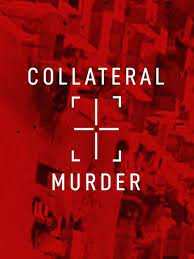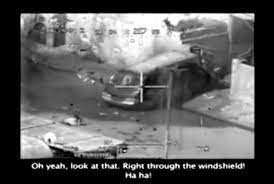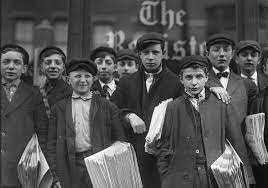By Chloe Brussard
Collateral damage - injury inflicted on something other than the intended target. (Specifically civilian casualties of a military operation.)
That is what came up when I searched up the definition of collateral damage on the Merriam-Webster dictionary. What didn't come up was a definition for collateral murder.
Murder - the crime of unlawfully killing a person, especially with malice aforethought .
In other words, the crime of killing someone that was deliberate, and premeditated.
Damage - loss or harm resulting from injury to person, property, or reputation.
So basically accidental harm to someone or something.
In this video, Collateral Murder, you can hear the soldiers asking for permission to engage. Permission to begin shooting. Permission to kill people. They knew, when they were firing those shots, that they were going to kill people.
It wasn't accidental. It wasn't damage. Having the knowledge of killing people is murder. Sure there are different degrees of it, but they knew what they were doing. They went to Iraq knowing that they were going to kill people.
They looked at cameras and saw AK-47s. They looked at a group of people and saw a rebel group. They looked at a van of people pull up and try to help a man as more targets.
And one of the worst parts, because there are just too many to choose from, is that when the dust settled from the first round of shooting and they saw a man dragging himself to the curb to try and reach safety, someone practically begged the man to pick up a gun. Because once a gun or weapon was in his hands, they have free range to fire.
That man, dragging himself to the curb, was a photographer.
Before they began shooting, they looked at the camera in his hands and decided that it was a weapon. That seems to be the case often times. Anything seen in someones hands is a weapon. And in a war zone, it seems that some of the soldiers get very excited when they see someone holding something.
One of the soldiers even commented on how the windshield of the car had been shot right in the middle. He even chuckled about it. These men are in a war zone. Killing people. And laughing.
This blog post is supposed to be a reaction to the video. My reaction was nothing but pure disgust. I had to look away at some points. I truthfully am speechless. There are no words that could describe how I felt while watch that.
And that video was taken 10 years ago in a completely different country. If that video is hard for me to watch, I cannot fathom having to experience it. I count myself lucky each and everyday that I grew up where and when I did.
Things like this are why media is such an important thing. It is able to capture the truth (if used and produced in the correct way) and show people things that they wouldn't otherwise know. The higher ups were telling newspapers that the people on the ground were hostile and they had no other choice to do what they did.
But this video shows otherwise.
Collateral damage is unavoidable. Collateral murder is a choice. But which one sounds better in speeches? Calling troops murderers doesn't have a good ring to it. Rather have it sound like the only option than to tell the truth, which is that there were more options.
There is always more options. Violence shouldn't be default. But sadly, that's what it's become.




















